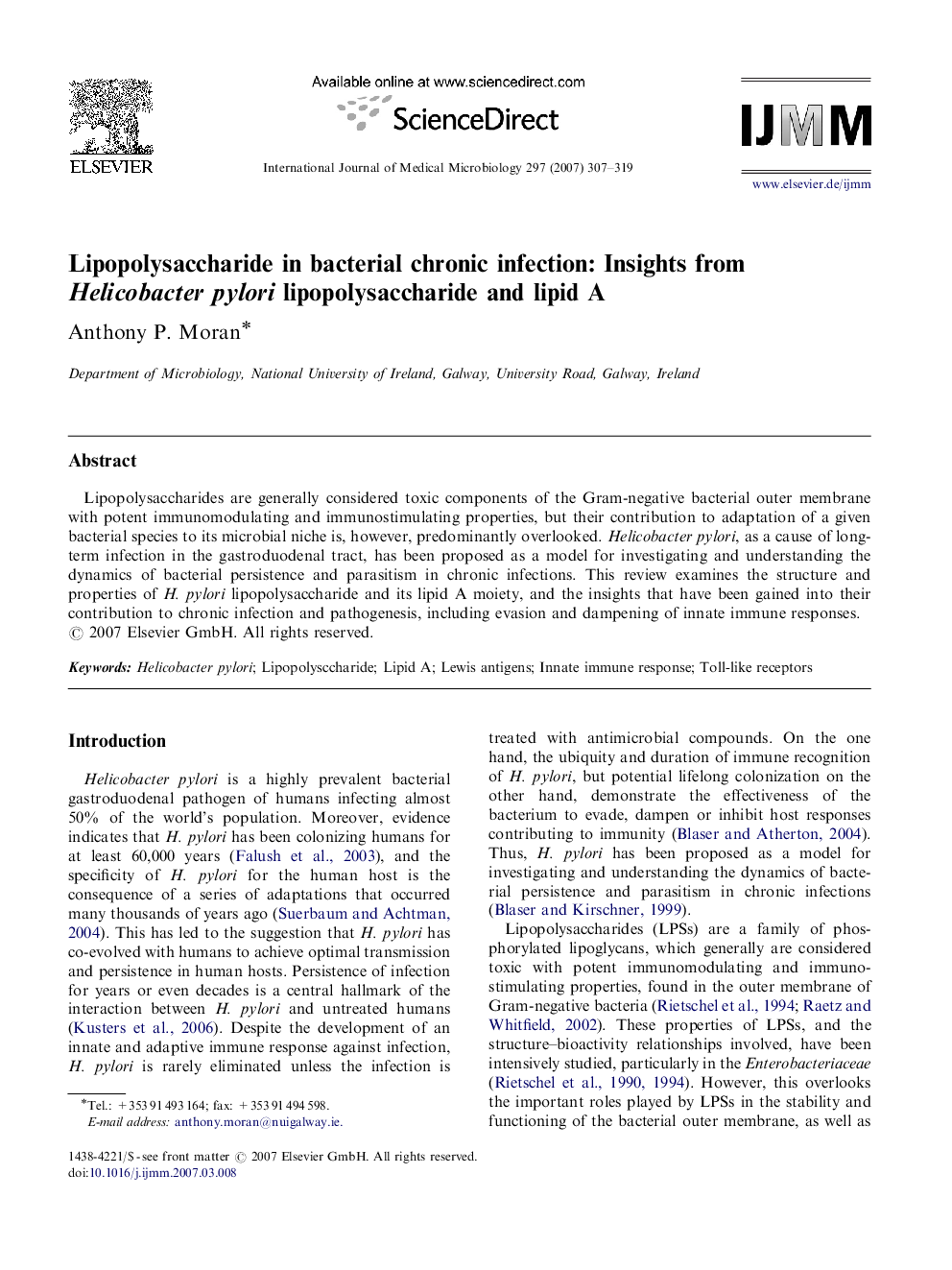| Article ID | Journal | Published Year | Pages | File Type |
|---|---|---|---|---|
| 2054547 | International Journal of Medical Microbiology | 2007 | 13 Pages |
Lipopolysaccharides are generally considered toxic components of the Gram-negative bacterial outer membrane with potent immunomodulating and immunostimulating properties, but their contribution to adaptation of a given bacterial species to its microbial niche is, however, predominantly overlooked. Helicobacter pylori, as a cause of long-term infection in the gastroduodenal tract, has been proposed as a model for investigating and understanding the dynamics of bacterial persistence and parasitism in chronic infections. This review examines the structure and properties of H. pylori lipopolysaccharide and its lipid A moiety, and the insights that have been gained into their contribution to chronic infection and pathogenesis, including evasion and dampening of innate immune responses.
